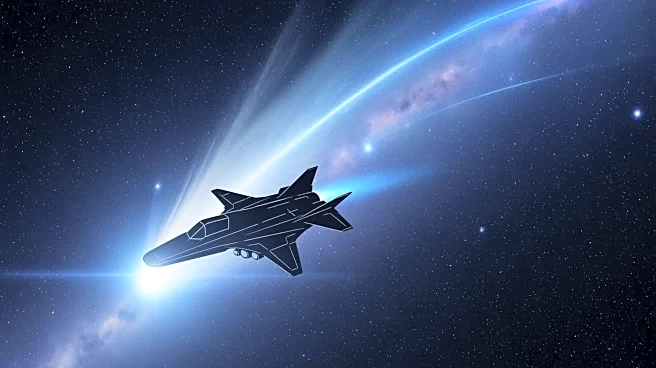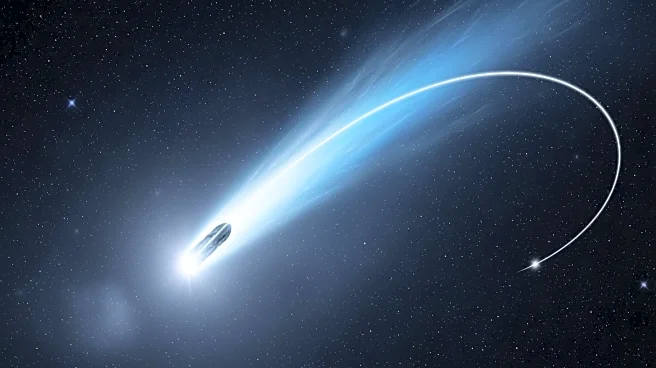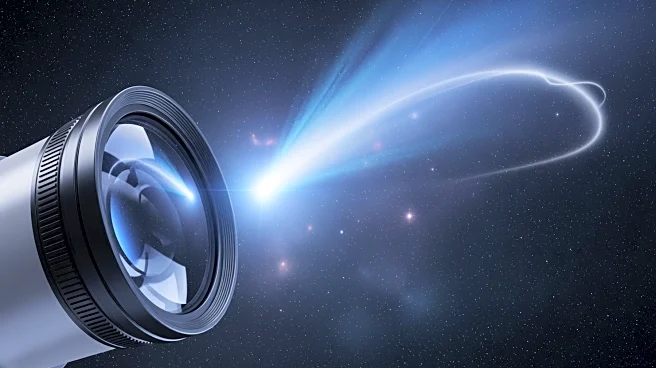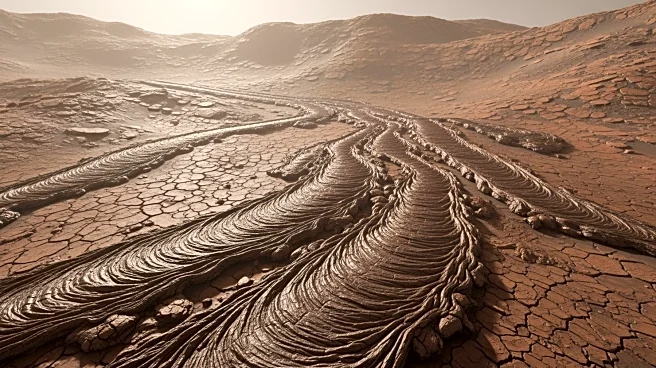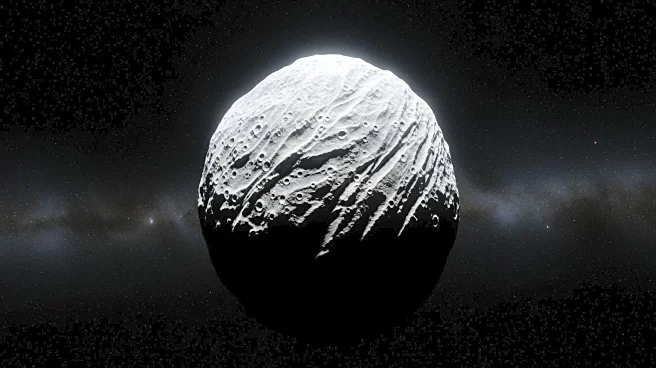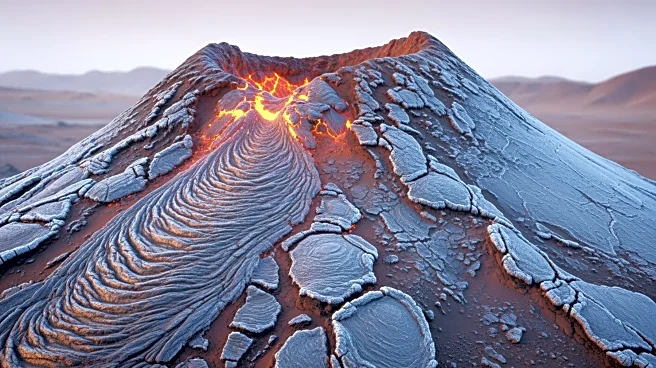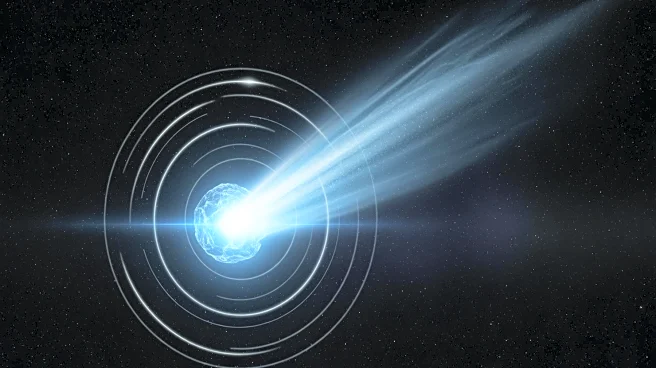What's Happening?
The European Space Agency (ESA) has achieved a significant breakthrough in tracking the path of the interstellar comet 3I/ATLAS, using images captured by the ExoMars Trace Gas Orbiter (TGO) spacecraft
orbiting Mars. This advancement has resulted in a tenfold increase in accuracy compared to previous estimates. The comet, which poses no immediate threat to Earth, was observed between October 1 and October 7, with its closest approach to Mars on October 3. The improved trajectory predictions were made possible by triangulating data from the Mars-based spacecraft with Earth-based observations, allowing astronomers to aim their instruments with greater precision. This marks the first time astrometric data has been collected by a spacecraft orbiting another planet and submitted to the Minor Planet Center.
Why It's Important?
This development is crucial for planetary defense, as it demonstrates the potential for using spacecraft positioned around other planets to enhance the accuracy of tracking celestial objects that could pose a threat to Earth. By improving the precision of trajectory predictions, scientists can better prepare for potential impacts from comets and asteroids. The ability to triangulate data from multiple locations in space offers a new method for monitoring near-Earth objects, which is essential for early warning systems and impact prevention strategies. The success of this mission underscores the importance of international collaboration and technological innovation in safeguarding our planet.
What's Next?
The ESA plans to continue monitoring 3I/ATLAS as it speeds through the solar system, with the Jupiter Icy Moons Explorer (JUICE) spacecraft set to observe the comet during its active phase. These observations will provide further insights into the behavior of interstellar comets and contribute to the development of more effective planetary defense mechanisms. As the comet moves away from the sun, JUICE's data will become available to scientists in February 2026, offering a unique opportunity to study the comet's interaction with solar radiation.
Beyond the Headlines
The successful tracking of 3I/ATLAS highlights the potential for expanding planetary defense strategies beyond Earth-based observations. By utilizing spacecraft positioned around other planets, scientists can gain new perspectives and improve the accuracy of celestial object tracking. This approach could lead to more comprehensive monitoring systems and enhance our ability to predict and mitigate potential threats from space. The collaboration between different space agencies and the integration of advanced technologies are key to advancing our understanding of the solar system and protecting Earth from extraterrestrial hazards.
